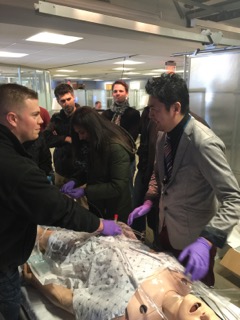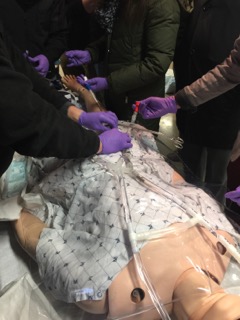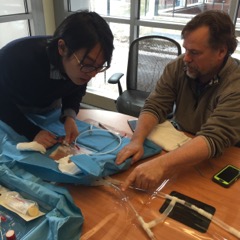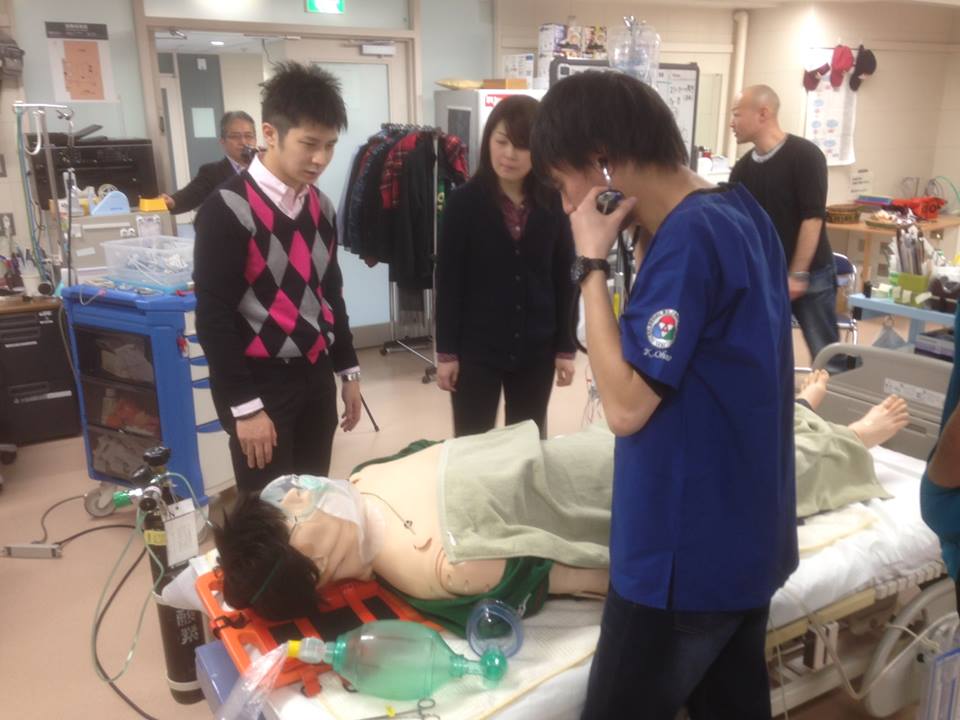“SimNight” is one of my special and free simulation seminars for any healthcare providers at SIMSTAR.
SIMSTAR is an abbreviation of our simulation center;
SImulation center for Medical Skills Training And Reserch
On Feb 24, more than 10 learners including young doctors and ICU nurses working at a certain city hospital came to our simulation center voluntarily.
The first and the second scenarios were made to have them experience common circulatory collapse happened to ventilated patient in ICU.
Scenarios are as follows;
1. 70 years old man
In ICU, on ventilator, SIMV(PC)
Diag. ARDS caused by pneumonia
a. hypotension due to rapid A-fib(HR≒180)→syncronized cardioversion
b. rt tension pneumothorax→needle decompression then chest drainage
2. 66 years old man
CC: severe shock, abdominal pain, diarrhea
PH: n.p.
By ambulance
Condition: AOSC, septic shock→intubation, EGDT, EST/ENBD→admission in ICU






